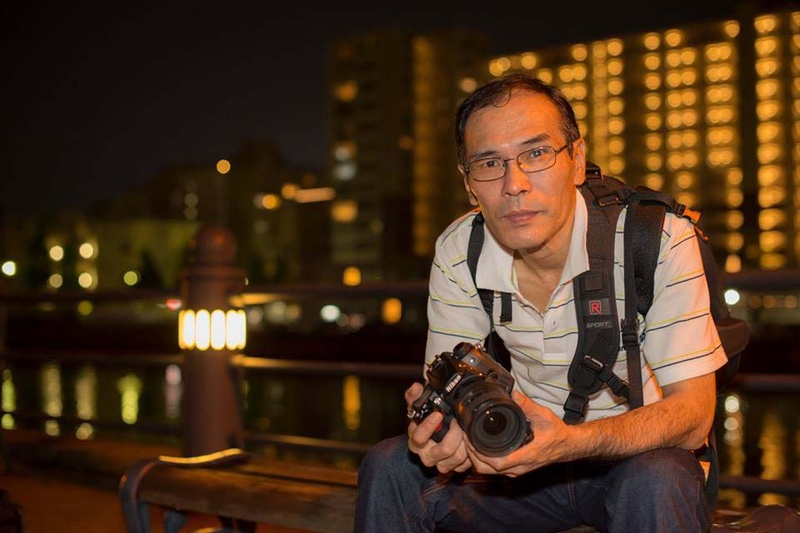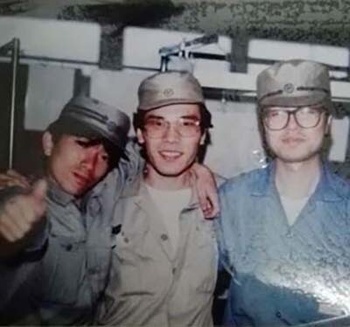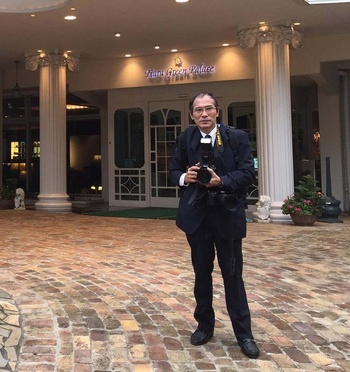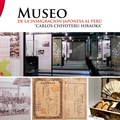In 2024, not only was the 125th anniversary of the beginning of Japanese immigration to Peru commemorated. With fewer speakers, the reverse path followed by the descendants of the Issei was also remembered: the 35th anniversary of the migration of Peruvian Nikkei to Japan.
In 1989, Peru seemed to be sliding down a slide towards catastrophe. A nightmare with open eyes: a brutal economic crisis that diluted wages and catapulted prices; attacks by an extremist group that spread terror like wildfire through car bombs, blowing up electricity towers, massacres, etc.; a general pessimism about the future of the country, prisoners in a labyrinth of darkness.
The disaster invited a stampede and thousands of Peruvians of Japanese origin began to leave for Japan: from middle-aged people with precarious businesses who in their fifties reset their lives to start from scratch to teenagers who flew to the country of their ancestors as soon as they finished school.
Japan was not only a refuge from disasters, but also an attractive destination to build a prosperous life from its foundations, as it offered salaries unimaginable in Peru at that time.
Everything about Japan made it attractive. In addition to the plentiful and well-paid work, it was a haven of safety compared to the turbulent Peru of the 1980s, where life hung in the balance.
Japan, however, was a place of passage. Everyone (or almost everyone) went with the idea of working for a few years, saving up and then returning to Peru to start a business or pursue higher education.
What happened to them? Some achieved their goals and returned to Peru, but many stayed in Japan, where they form part of the largest Spanish-speaking community in the Asian country.
They are no longer dekasegi, but immigrants. Japan is their present and their future; Peru, their past.
There are exceptions, however: people who plan to return to Peru. Japan, where they have lived for three decades or more, continues to be a stopover, not their final destination.
One of them is Shigueru Sakuda. He arrived in Japan in 1989 when he was 27 years old. The sansei is just waiting for retirement age to come so he can say goodbye to the country where he has lived for more than half his life and settle permanently in his homeland.
Not too young, not too old either
Shigueru arrived in Japan at an optimal age. He was young, so his body was prepared to withstand the hard work in the auto parts factories, with its long and exhausting hours.
But he wasn't a brat, a 17 or 18-year-old boy who was losing his mind after earning more money than he had ever seen and wasting it on new cars or parties, instead of investing in his future, in his education.
Neither young nor old. He arrived in Japan at the right time, and that is why he believes he adapted quickly to the country.
“At the beginning, people came with the intention of collecting okane, those were different times when hardness prevailed over the current delicacy,” he says.
“In fact, living safely in Japan, as opposed to terrorism in Peru, made life in Japan bearable,” he added.
Shigueru lived a life of dekasegi, working and saving money for the purpose of doing business. “The high salaries of the past allowed you to save up to achieve whatever you wanted,” he recalls.
“I have tried several ventures and it went badly,” he says. However, despite the setbacks, he has not lost hope of investing successfully. His commitment to the future remains intact. “I still believe I can do it,” he says. “Many have done very well.”
Another Japan
When his son—who was born in Japan and brought to Peru as a child—entered a Peruvian university, Shigueru changed his plan.
Since a higher education institution required a larger financial outlay, the sansei had to remit more money. So he resigned from Peru.
He even ruled out any possibility of returning to his country on vacation, as it could put his job at risk, an unthinkable luxury with a university-educated son.
Now, what could have been a hammer blow, an emotional shipwreck at the certainty that the rest of his life would be spent on an island far from his homeland, calmed him down.
With a stroke of the pen, he eliminated the uncertainty that weighs down many Peruvians in Japan (will I return to Peru? Yes, no? When? Next year?). Without the weight of uncertainty, he relaxed and began taking photos.
Thanks to photography, his view of Japan was transformed. It was no longer just the country he was in to make money, an enclave of factories that swallowed up almost all his days, leaving him barely any time to rest, but also a land rich in culture, in architectural attractions, in natural landscapes that take your breath away with their beauty, revalued before his now trained eye.
“I used to work to save money. Then, with my interest in photography, I discovered this Japan that is so popular with tourists,” he adds.
“I like Japan because I see it through the eyes of an eternal tourist,” he says.
Eternal tourist? It seems like an oxymoron, but it makes sense for someone who has learned to appreciate Japan since replacing the tired — and probably fed up — gaze of the dekasegi with the enthusiastic and eager-for-discovery gaze of the tourist.
That said, how is it possible to be a tourist in a country where you have lived for 36 years? Because the term integration does not exist in Shigueru's vocabulary. "Integrating into Japanese society is not a priority for me, the few but great Japanese friends I have are enough for me," he explains.
Regarding language, he reveals: “It has nothing to do with Nihongo, but I am also bad at any language.”
But Japan gives him what he needs: a salary and places to take photos. He wants nothing more.
However, although he says he likes Japan, the Peruvian resident of the city of Aikawa adds: “Very nice to visit, very bad to live in. I prefer the nice.”
Why is it bad for living?
“For working in a factory with overtime, and if you don’t have it, then you have to work two jobs to pay for your children, without time for them,” she answers.
"If you live in a big city, the expenses are worse," he stressed.
Japan can be overwhelming with the costs of living in an expensive country. Added to this is the fact that overworking to make ends meet cuts back on time spent with loved ones.
But for Shigueru, Japan still offers second chances. Every time he tried his luck, he was able to recover.
“In Japan, even if you have debts, you can pay them off by working hard and being disciplined so you can get back on track,” he says.
Peruvian identity more than Nikkeiness

Many Nikkei who considered themselves “nihonjin” in Peru realized in Japan, where they were treated like any other foreigner, that they were Peruvian.
Japan, then, paradoxically brought them closer to Peru.
Living in Japan has strengthened Shigueru's Peruvian identity. “It's obvious that in Japan the Peruvian identity is more important than the Nikkei identity,” he says. He then adds: “But I always have that inherited Nikkei filter inside me.”
A Peruvian “in Japan is like a provincial who lives in Lima and spends his time in departmental clubs with their customs,” he explains.
In Japan, he attends Peruvian events and loves marinera and Andean music, among other artistic expressions of his country. At these events, he notes, “you don’t see Nikkei anywhere.”
The return and old age
With his son now grown and independent, Shigueru does not feel tied to Japan. He can return to his country, but he wants to take advantage of the two years he has left as part of the economically active population to continue saving money and return to Peru as a retiree.
His decision to return to Peru at the age of 65 is purely financial. Because he is a contract worker, his monthly pension as a retiree will be very low. And in Peru, where the cost of living is lower than in Japan, that money will go a long way.
Now, if he were a permanent or stable worker, his retirement would be higher and he would have enough to live on in Japan. In that case, he would no longer be so sure about returning to his country. “I have to think about where to spend my old age,” he admits.
Shigueru Sakuda is driven by pragmatism. There is no room for sentimentality or nostalgia. He faces things with realism and serenity, without regrets or hallucinations about impossible futures. What there is is what there is, period. That's life and there is only one option: to move forward.
© 2025 Enrique Higa Sakuda













